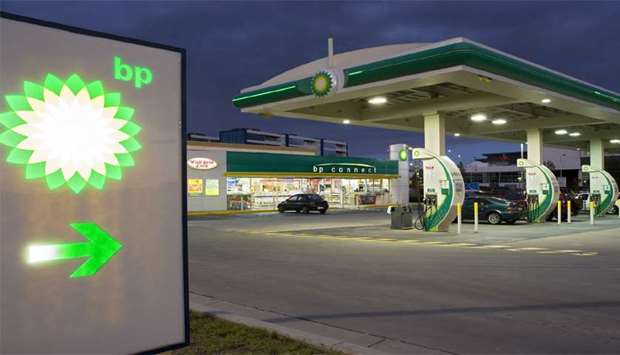* 2018 profits rise to $12.7 billion
* Net debt, gearing rise after BHP acquisition
* BP's net oil and gas production grows by over 8%
* Shares rise more than 3% in early trade
BP joined its competitors in posting a strong 2018 performance, with a doubling of profits driven by strong growth in oil and gas output following a large US shale acquisition.
Record utilisation of its oil and gas fields and refining capacity further helped BP seal what was a transformational year as the aftermath of the deadly 2010 Deepwater Horizon disaster eased.
But while the London-listed firm's revenue beat forecasts, debt rose and the pace of its share buyback scheme slowed in the last quarter after it paid the first and largest tranche of the $10.5 billion BHP acquisition.
BP shares rose more than 3.3 percent in early trade, hitting their highest since early December.
‘We now have a powerful track record of safe and reliable performance, efficient execution and capital discipline. And we're doing this while growing the business,’ BP Chief Executive Officer Bob Dudley said in a statement on Tuesday.
Royal Dutch Shell, Exxon Mobil and Chevron all reported stronger-than-forecast earnings last week driven by higher production in US shale basins where Oil Majors have invested billions in recent years.
The strong gains came despite a sharp drop in crude prices at the end of the year that wiped out most gains made in share prices throughout the year.
Uncertainty over the outlook for oil prices as well as concerns over global economic growth and sino-American trade tensions are likely to continue to weigh on the sector.
Chief Financial Officer Brian Gilvary told Reuters he expected Brent crude prices to hold around current levels of $60 a barrel in 2019, while demand was expected to rise by 1.3 to 1.4 million barrels per day, a similar pace to that seen in 2017.
Capital expenditure will be $15 to $17 billion this year, after reaching $15.1 billion in 2018, Gilvary said.
BP plans to sell $10 billion of assets over the next two years to help pay for the BHP deal, including a suite of fields in the United States as it focuses on the most attractive basins, he added.
PROFITS DOUBLE
After settling the vast majority of payments for the 2010 spill in the Gulf of Mexico, totalling nearly $70 billion, BP has more recently focused on growing production into the next decade, including the BHP deal which is its largest in 30 years.
For the year, BP's profit rose to a five-year high of $12.7 billion, double the previous year's $6.17 billion and above analyst expectations of $11.88 billion.
‘Overall, we see this as a strong set of results, with stronger underlying earnings translating into cash,’ Biraj Borkhataria, analyst at RBC Capital Markets, said in a note.
Production rose to 3.7 million barrels of oil equivalent per day in 2018 after BP completed the acquisition of BHP's onshore US shale portfolio and thanks to the start up of new fields including the 120,000 barrel per day Clair Ridge project in the North Sea.
Excluding its share of production from its 20 percent stake in Russia's Rosneft, BP's production was up 8.2 percent from 2017.
Gearing, the ratio between debt and BP's market value, rose to 30.3 percent at the end of 2018 from 27.4 percent a year earlier. Net debt was $44.1 billion at the end of last year.

